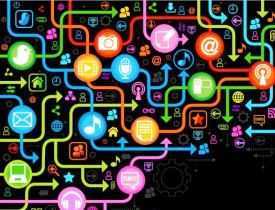Description
Course Name: Certificate in Web Technologies and Multimedia
Course Id: CWTM/Q1001.
Education Qualification: 12th Pass.
Duration: 90 Hrs.
How You will Get Diploma Certificate:
Step 1- Select your Course for Certification.
Step 2- Click on Enroll Now.
Step 3- Proceed to Enroll Now.
Step 4- Fill Your Billing Details and Proceed to Pay.
Step 5- You Will be Redirected to Payment Gateway, Pay Course and Exam Fee by Following Options.
Card(Debit/Credit), Wallet, Paytm, Net banking, UPI and Google pay.
Step 6- After Payment You will receive Study Material on your email id.
Step 7- After Completion of Course Study give Online Examination.
Step 8- After Online Examination you will get Diploma Certificate soft copy(Scan Copy) and Hard Copy(Original With Seal and Sign).
Step 9- After Certification you will receive Prospect Job Opportunities as per your Interest Area.
Online Examination Detail:
Duration- 60 minutes.
No. of Questions- 30. (Multiple Choice Questions).
Maximum Marks- 100, Passing Marks- 40%.
There is no negative marking in this module.
Benefits of Certification:
- Government Authorized Assessment Agency Certification.
- Certificate Valid for Lifetime.
- Lifetime Verification of Certificate.
- Free Job Assistance as per your Interest Area.
Syllabus
Certificate in Web Technologies and Multimedia
Introduction to Computers and Multimedia
PC Computing
HTML & DHTML
Web Programming with PHP
Web Graphics (Using Photoshop)
Analysis and Design for Web Applications
Introduction to Computers and Multimedia
Introduction to Computers Computer basics, History of computers, Classification of computers, Hardware and software, Data representation, Components of Computer Operating system, Input and output devices, Motherboard, CPU, Memory, Storage devices, Internet Internet and World Wide Web, Search engine tools and techniques, Web servers, Web browsers, Email, Graphics Devices and Supporting Software Graphic cards, Open GL, Hardware drivers, Introduction to multimedia, Multimedia authoring tools and new digital mediam, Components of Multimedia: Text: About fonts and faces, Using text for multimedia, Introduction to Typography, Designing with text. Image: Pixel, Vector and Raster graphics, Color Depth, Resolution, Aspect ratio, File formats, Compression. Audio and Video: TV and video standards, Time code, Digital audio and video, File Formats, Compression, Codecs, Digital editing tools. Animation: History of Animation, Types of Animation, Animation tools and Development.
PC Computing
Navigation, Personalization, Viewing and sharing media, organizing data, working with Administrative tools and control panel, Microsoft Word: File formats and Export features, Automating tasks ( Smart documents, Macros), Mail Merge, Page layout ( Headers and footers, Margins, Page and line numbers), Images and Tables, Working with text, Working with a document (Create, open, Save, Export etc.), Toolbar, Interface, Microsoft Power Point: Creating and editing power point presentations ( Slideshows, Animations, Transitions, Working with a document (Create, open, Save, Export etc.), Interface, File formats and Export features, graphics and charts), Microsoft Excel: File formats and Export features, Understanding formulas, Working with sheets (formatting arranging and viewing sheets), Charts and graphics, Working with a document (Create, open, Save, Export etc.), Interface.
HTML & DHTML
Introduction to HTML:L Elements of Web page (Text , Image & Hyperlink Elements), Html Tags, Using Tools: Structure of a page, Links & Navigation, Backgrounds, Animated Graphics, Working with Tables: Page Design & Layout with Links, Advanced Layout with Tables, Working Style Sheets, Forms & Frame: HTML Forms (Top of Formelement, Form controls, creating labels for control, structuring forms, focus, sending form data to server), Using Frame (, element, creating links between frames, nested framesets) Introduction to DHTML: Understanding DOM, Drop Down Menus, Text Effects and Animation, Working with Layers.
Web Programming with PHP
INTRODUCTION TO PHP: Basic Syntax Integrating PHP with HTML, PHP Data type, Defining variable and constant, OPERATORS & EXPRESSIONS: Concatenation, Bitwise, Error Suppression, Increment, Arithmetic, Assignment, Comparison, Logical Operators & Ternary operator, Decrement operators, WORKING WITH FLOW CONTROL THROUGH CONTROL STATEMENT: f statementI, If–else statement, If–else ladder statement, If–elseif–else statement, Switch statement, PHP FUNCTIONS: Returning a value from a function, Defining User functions, Using built–in functions Using variables in functions.
Web Graphics (Using Photoshop)
Introduction to Photoshop: Size and Resolution, Scanning New images, Creating New Images, about Digital Images Managing Workspace, Using Tools: Toolbox & Cut , Copy, Screen Modes, Options & Color modes, Working with selections, Paste, Working with Layers: Creating , Deleting, Layer Panel & Layer Mask, Hiding Layers Clip Mask, Group, & Blending Modes, Ungroup Layers, Adjustments and Transforming Layers: Color correction·Adjustment Layers Clone Sources· Retouching Images · Variations, Painting and Drawing Tool: Work Path· Strokes ·Brushes Painting Tools, Working with Filters: Liquefy·Applying Filters Filter Gallery· Vanishing Point, Working with Text and Extensions: Text with Path·Type Tools Adjusting· & Detail of useful Extensions·converting Text & use.
Analysis and Design for Web Applications
Introduction to Software: Definition, Software characteristics, Software components, Software crisis, Software Applications, Software Engineering Paradigms, Software Development Life Cycle, Software Requirement Specification (SRS): Definition, Problem analysis, structuring information, Data flow diagram and data dictionary, structured analysis, Characteristics and component of (SRS), Design Objectives Design Principles, Design Methodology, Design Review, Introduction :Meaning and Concept, Advantages and Disadvantages, Electronic Commerce vs. Traditional Commerce, E-Commerce and Media Convergence; Autonomy of E-Commerce Applications, Types of E-Commerce; Architectural Framework for Electronic Commerce, Business Requirement Specification (BRS): Effect of Internet on Business and Corporations, Business on Internet and vice-versa, Issues of business through Internet.

